This case report points out the previous restorative breakdown of tooth #8. An interdisciplinary approach had to be applied to prepare the final treatment plan. All factors were taken into account when choosing the type of restorations and materials in this case. The ultimate treatment is presented with the final result. The objectives were to clinically assess patient’s current chief complaint, address her aesthetic needs, apply an interdisciplinary approach, deliver treatment of utmost quality, and maintain oral health.
Key points
- •
Previous restoration failure is recognized.
- •
The probable cause of these failures is determined.
- •
Decision is made regarding the new treatment plan and sequence of treatment.
- •
Treatment is provided, and results are observed.
- •
The plan for maintenance is charted.
Patient background
A 29-year old woman presented to the New York University College of Dentistry (NYUCD) clinic for a possible replacement of her old broken restorations and for possible Invisalign (Align Technology, Inc, San Jose, CA) treatment. Her chief complaint was “I want my lower and upper teeth to match in color and alignment” ( Fig. 1 ). The patient reported extensive restorative and prosthodontics treatment of her upper arch 15 years ago in Russia. She mentioned that she liked how crowns matched her natural teeth in the beginning, but as time went by and “all her friends got whiter teeth by means of veneers or bleaching,” she started to want to get rid of the yellow hue in her teeth ( Fig. 2 ). Apart from that, the patient started noticing the chipping of her lower front teeth and one of the crowns on the upper teeth ( Fig. 3 ). The crowding of the lower front teeth had always been a concern of the patient; however, she was hesitant to do anything about it because she wanted to avoid extensive preparation of those teeth, as had happened on the upper teeth (see Fig. 3 ). The patient also mentioned that she might have needed a couple of old fillings replaced ( Figs. 4 and 5 ). The patient was eager to change the restorations and start the treatment, but she did not want it to be “too invasive.” Her primary concern was esthetics, but she did not want any long all-embracing treatment.
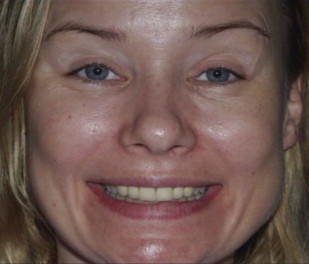
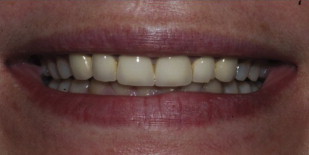

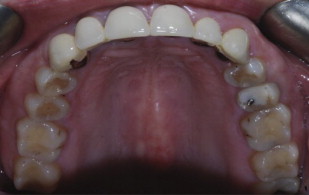
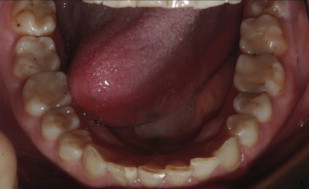
Medical history was noncontributory; the patient reported no drug allergies.
Patient background
A 29-year old woman presented to the New York University College of Dentistry (NYUCD) clinic for a possible replacement of her old broken restorations and for possible Invisalign (Align Technology, Inc, San Jose, CA) treatment. Her chief complaint was “I want my lower and upper teeth to match in color and alignment” ( Fig. 1 ). The patient reported extensive restorative and prosthodontics treatment of her upper arch 15 years ago in Russia. She mentioned that she liked how crowns matched her natural teeth in the beginning, but as time went by and “all her friends got whiter teeth by means of veneers or bleaching,” she started to want to get rid of the yellow hue in her teeth ( Fig. 2 ). Apart from that, the patient started noticing the chipping of her lower front teeth and one of the crowns on the upper teeth ( Fig. 3 ). The crowding of the lower front teeth had always been a concern of the patient; however, she was hesitant to do anything about it because she wanted to avoid extensive preparation of those teeth, as had happened on the upper teeth (see Fig. 3 ). The patient also mentioned that she might have needed a couple of old fillings replaced ( Figs. 4 and 5 ). The patient was eager to change the restorations and start the treatment, but she did not want it to be “too invasive.” Her primary concern was esthetics, but she did not want any long all-embracing treatment.
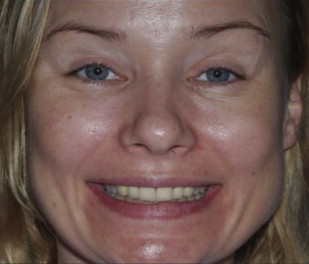
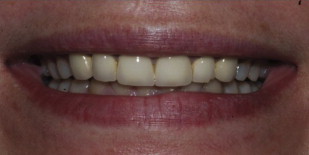
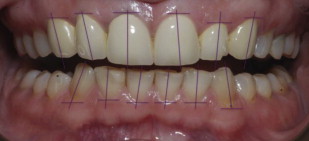

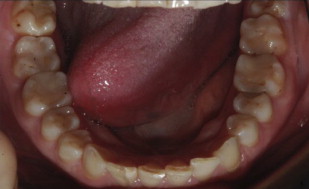
Medical history was noncontributory; the patient reported no drug allergies.
Stay updated, free dental videos. Join our Telegram channel

VIDEdental - Online dental courses


